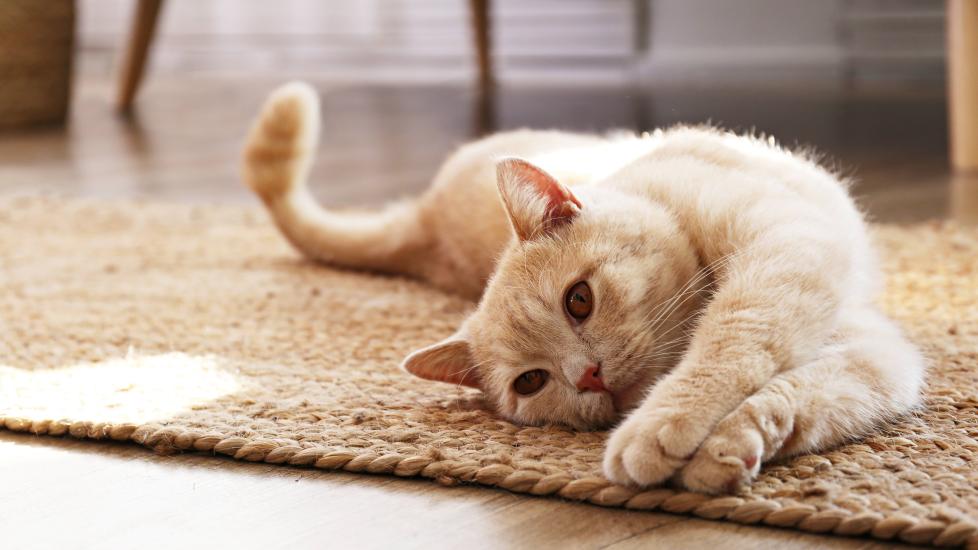How To Read a Cat’s Body Language
Adobe Stock/Evrymmnt
Our feline friends have their own cat language to communicate their thoughts and emotions. They use both their body (including their eyes, ears, whiskers, and tail) and their voice to show what they are thinking and feeling. By learning the body language of a cat, we can better understand and fulfill our kitties’ wants and needs.
Note that when you’re interpreting cat body language, consider everything that’s going on around the cat. Put yourself in the cat’s paws and ask how the situation and environment—including the sights, sounds, and smells—might make them feel. For example, if a person is cornering a cat, even unintentionally, the cat might feel scared or threatened. If a cat looks upset for no reason, they may be sick or in pain.
The following are different body language signs that correspond to various emotions in our cats.
Happy Cat Body Language
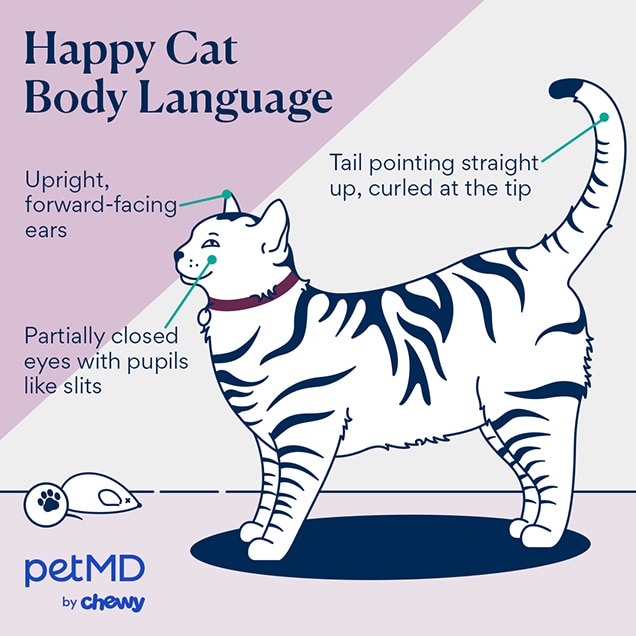
When a cat is happy, their posture is typically loose, with their limbs and tail stretched out away from their body when lying down. If they are showing their belly, it probably means that they feel safe—though this is not necessarily an invitation for a belly rub! A happy cat might cuddle up next to you or knead you with their paws.
Eyes: The eyes of a happy cat may be round or partially closed, and their pupils narrow like slits. If a cat blinks slowly at you, it means they trust and love you. You can blink slowly back to show them that you love them too!
Ears: Happy cats’ ears are upright and facing forward.
Tail: A tail that is pointed straight up with a curl at the tip is a reliable sign that a cat is happy and confident.
A cat may purr to express their contentment and pleasure, meow when greeting someone or asking for something like food or attention, or trill (which is like a high-pitched purr) to show they are friendly.
Playful Cat Body Language
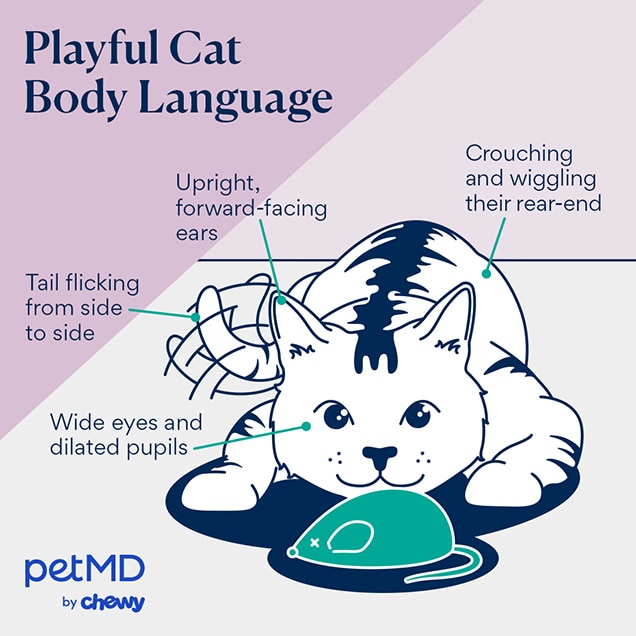
Cats are predators with a natural instinct to hunt. When they want to play, they may act like they are hunting by crouching down, wiggling their rear-end, and chasing, pouncing on, or grabbing hold of a toy.
Eyes: A playful cat’s eyes will be big and their pupils might be dilated.
Ears: Their ears will be up and facing forward.
Tail: Cats who are engaged in hunting behaviors will often flick their tail from side to side as they watch whatever is captivating their attention. (However, a flicking tail when the cat is not stalking something most likely means that the cat is annoyed.)
Play provides excellent physical and mental enrichment to help keep cats healthy, so provide them with a toy when they act like they want to play.
Stressed Cat Body Language
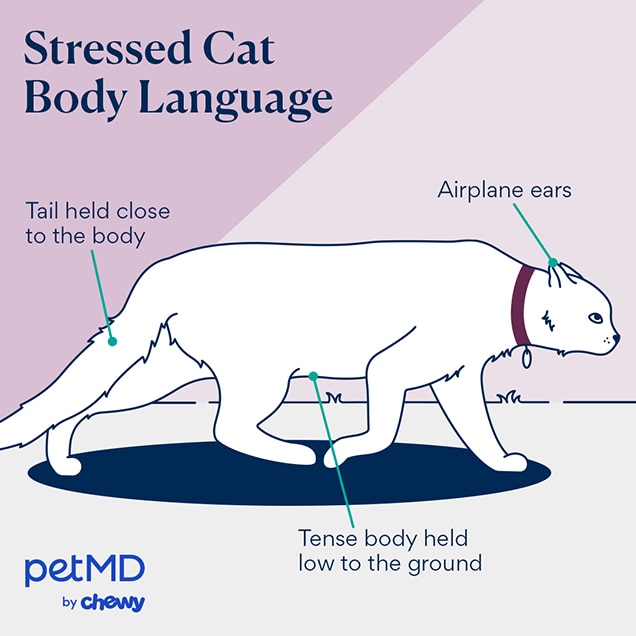
When a cat is feeling stressed, they may have a stiff and tense body held low to the ground. The cat may also engage in displacement behaviors—meaning normal behaviors (such as licking their lips, scratching, grooming, and yawning) that are performed out of context—to cope with underlying stress. Stressed cats may also urinate or defecate outside of the litter box.
Eyes: A stressed cat’s eyes may appear wide or narrowed.
Ears: Their ears may be rotated to the sides (in an “airplane ears” pose) or angled backward. The whiskers may be held further forward than normal.
Tail: The cat may hold their tail close to their body or thrash and thump it when feeling stressed or annoyed.
If you notice that your cat is stressed, try to identify the cause and remove it, if possible. If you suspect that you may be causing your cat stress, stop the activity or behavior that could be causing this reaction.
Fearful Cat Body Language
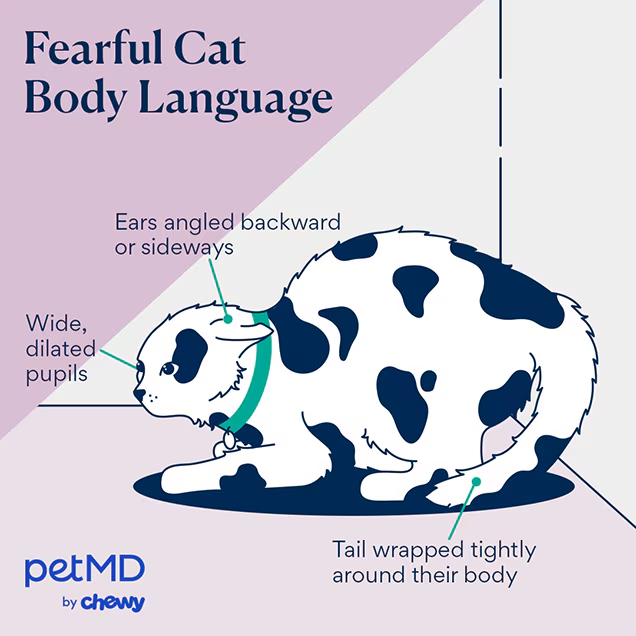
In addition to being predators, cats are also prey and may feel scared when they think something might hurt them. In response, they may initially make themselves look smaller by crouching low to the ground and scrunching up their body.
Eyes: A fearful cat’s eyes widen, and their pupils dilate due to the effects of the fight-or-flight response.
Ears: Their ears are often angled backward or sideways. The further back a cat’s ears are pinned, the more terrified they are. Their whiskers may be pulled back flat against their face.
Tail: A fearful cat may wrap their tail tightly around or underneath their body.
When a cat feels threatened, they may growl and hiss to warn the threat to back off. Hissing is mostly an involuntary reflex that occurs when a cat is scared or startled. As their fear increases, cats may let out a loud, drawn-out yowl followed by a shriek to indicate that they are about to defend themselves.
If a cat exhibits body language consistent with fear, remove the threat. Never attempt to pick up a growling or hissing cat, as this may cause a scared cat to resort to aggression. Many cats may seek a safe space when fearful, so their environment should have plenty of hiding spots and perches that they can easily and quickly access.
Aggressive Cat Body Language
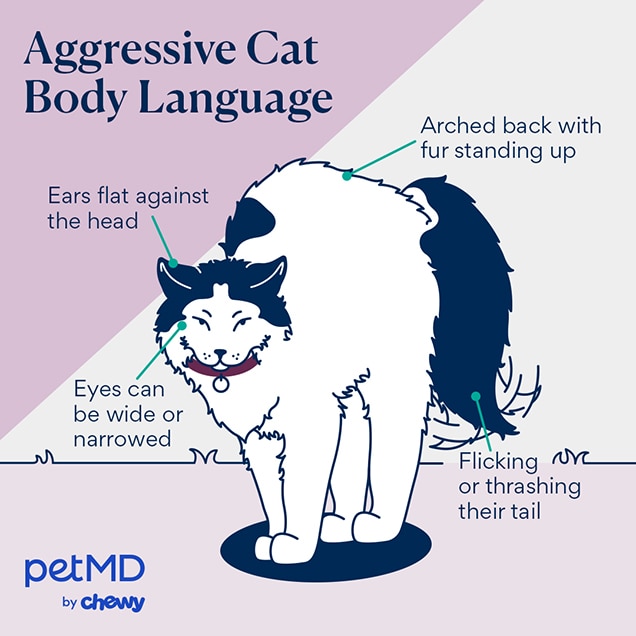
Sometimes when a cat believes they are in danger, they may feel they have no other choice but to fight for their safety. They may try to make themselves look as large and as intimidating as possible by arching their back and letting their fur stand up (an involuntary reaction to fear called piloerection).
Eyes: A cat who is about to become aggressive may have widened eyes with enlarged pupils, or their eyes might be narrowed. They may stare directly at their foe to keep the potential danger in sight.
Ears: Their ears will be turned back or flat against their head and their whiskers might be flat against their cheeks or pushed forward.
Tail: They might flick or thrash their tail.
A cat often attempts to avoid resorting to aggression by growling and/or hissing. But if these warnings are not heeded, then a cat may spit, a sudden and explosive burst of noise that is often accompanied with a lunge or swat. Like hissing, spitting is an involuntary reaction.
Signs of aggression are usually obvious to pet parents, but it’s important to remember that a cat showing aggression is not being mean or vindictive—they are panicking. If you see a cat demonstrating these signs, remove the perceived threat and give the cat space.
Sick or Painful Cat Body Language
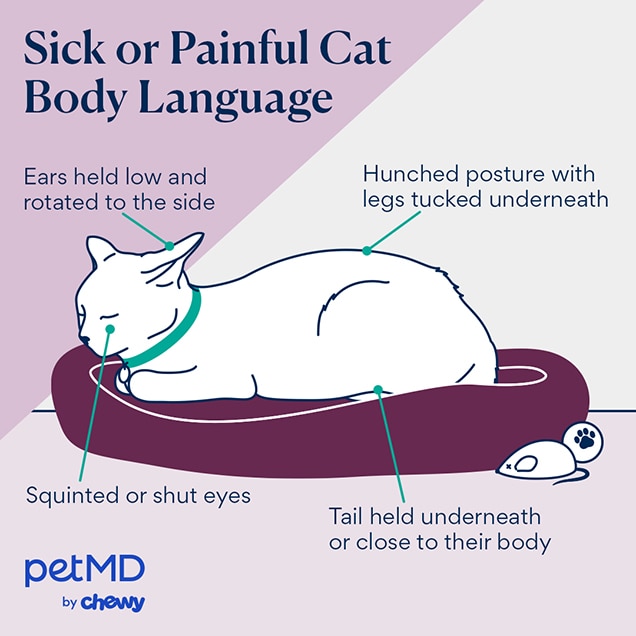
A cat’s body language doesn’t just provide a lot of information about how the cat feels emotionally—it can also reveal if the cat is sick or in pain. Cats are pros at masking physical illness, so changes in their body language may be the first signs that something is wrong.
When a cat is in pain or sick, they may hunch their body with their legs tucked underneath them. Their body may appear tense.
Eyes: When a cat is sick or in pain, their eyes may be squinted or held shut and may appear dazed or glassy. Sometimes, the cat’s third eyelid, which is pink tissue in the corner of the eyes, may be visible.
Ears: Their ears may be held low or rotated to the sides.
Tail: Their tail may be held underneath or closely wrapped around their body.
Cats may purr due to pain or illness, and an increase in meowing or yowling may signal emotional or physical distress.
If you see any of these changes (or other changes in your cat’s normal behavior such as hiding, aggression, decreased energy, or changes in appetite, grooming, or sociability), take them to the vet.
Understanding a cat’s body language is essential for understanding their emotions and needs, which will make you a better cat parent and advocate for your cat’s well-being.
